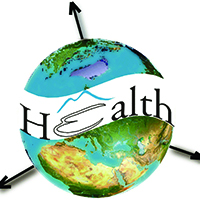The impact of geographic mobility on the spread of COVID-19 in Hong Kong

All claims expressed in this article are solely those of the authors and do not necessarily represent those of their affiliated organizations, or those of the publisher, the editors and the reviewers. Any product that may be evaluated in this article or claim that may be made by its manufacturer is not guaranteed or endorsed by the publisher.
Authors
The modern highly globalised economy is jeopardising human health as the increased mobility and interconnectedness has the potential to rapidly transmit pathogens across the globe. This was recently confirmed by the coronavirus disease 2019 outbreak, which quickly led to localised outbreaks in virtually every country. As the existing health systems were unprepared, the world has witnessed a critical shortage of life-supporting and health-sustaining resources. In the absence of effective non-pharmaceutical interventions to suppress the virus transmission, many governments imposed total or partial lockdowns, with devastating economic consequences. The case of Hong Kong in quickly suppressing the virus from spreading can thus be a lesson for all. In this study, open data sources of infected individuals are employed to compile maps of disease incidents at various geographic scales with the aim of better understanding the transmission dynamics and discern spatial variability. Our findings show that tracking human mobility patterns can improve awareness of spatiotemporal factors driving the risks of human exposure to viruses. Moreover, we have demonstrated that spatial tools can be successfully employed to explore connections between individuals and wider communities with the aim of informing adaptation of policies at different spatial scales and for different time periods. As was shown in the case of Hong Kong, disease control encompasses the interrelated tasks of reducing social interactions and encouraging adoption of protective behaviours.
How to Cite

This work is licensed under a Creative Commons Attribution-NonCommercial 4.0 International License.
PAGEPress has chosen to apply the Creative Commons Attribution NonCommercial 4.0 International License (CC BY-NC 4.0) to all manuscripts to be published.













